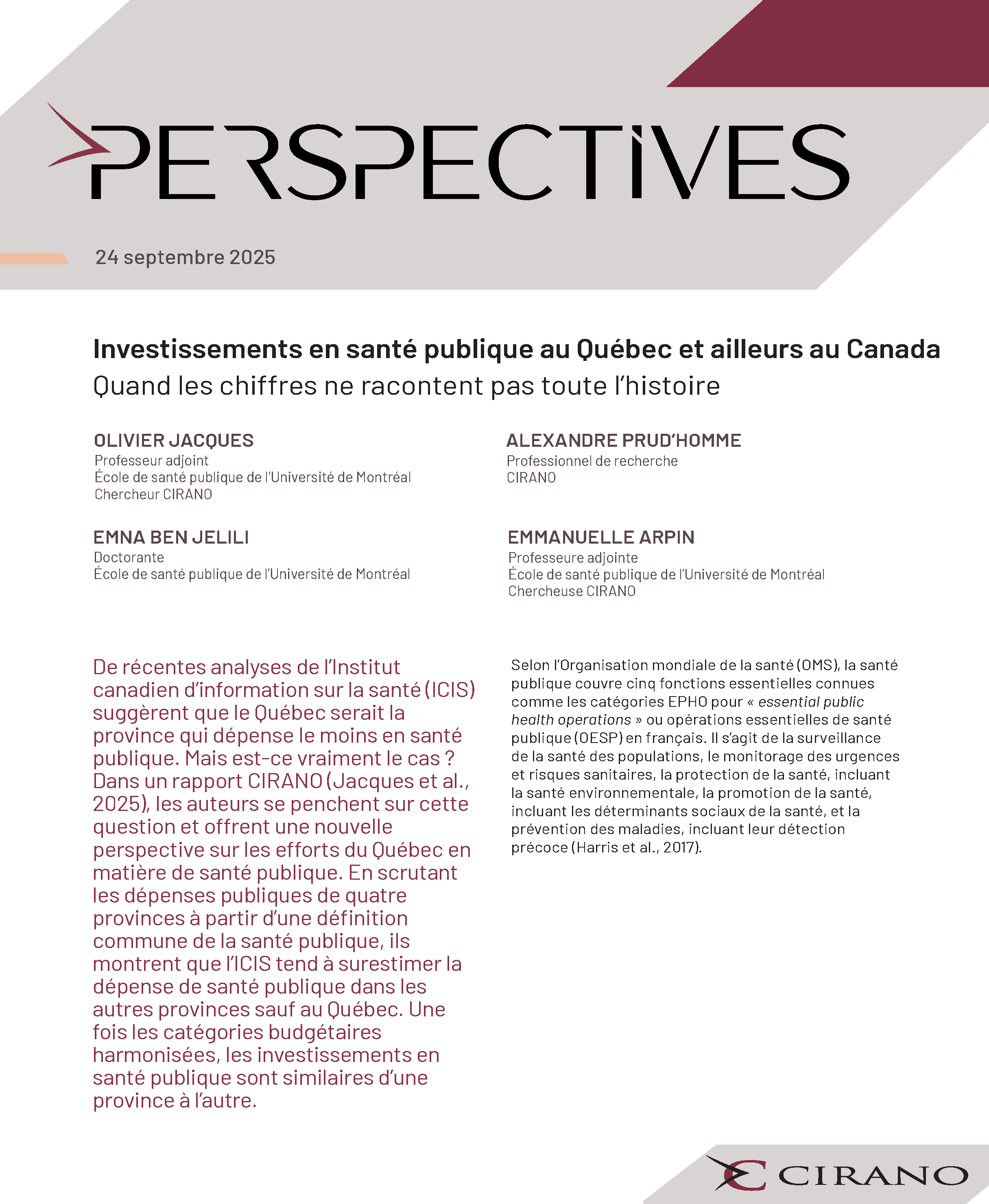Gestion de la pandémie de COVID-19 - Analyse de la dotation en personnel dans les centres d'hébergement de soins de longue durée du Québec au cours de la première vague
In response to a request from the Quebec Health and Welfare Commissioner, this study provides an overview of the evolution of the workforce in long-term care facilities (CHSLD) before and during the first wave of the COVID-19 pandemic. The study is part of an exploratory methodological effort to analyze the adequacy of the supply of human resources in CHSLDs in relation to needs, based on available data and existing tools. It is based on a retrospective longitudinal design and uses administrative and clinical data from four establishments: three in Greater Montreal, those most affected by the first wave, and one outside Greater Montreal.
The study answered the three following questions:
- To what extent did the supply of human resources meet the needs of CHSLD residents before and during the first wave of the pandemic?
- To what extent the Je Contribue initiative and the use of employment agencies helped broaden the pool of available resources?
- What was the extent of absenteeism and did it have a significant impact on the pool of available resources?
The authors compare three methods of estimating needs: the Iso-SMAF profiles, the minimum ratios proposed by Voyer et al. (2016) and the standards recommended by the US Centers for Medicare and Medicaid Services. The results show that long-term care facilities demonstrated a great ability to adapt by mobilizing the human resources needed to meet or exceed the minimum ratios required. The number of health care workers per 100 residents increased slightly during the first wave. This takes into account the decrease in the number of residents per facility during the first wave probably due to the deaths of many residents. The analysis shows that during the first wave, the facilities most affected by the first wave were able to maintain an equivalent or higher worker/resident ratio compared with the pre-pandemic period, despite a 75% increase in absenteeism between the two periods.
These results must be interpreted with caution, as the analysis does not take into account qualitative factors such as managerial support, human resources mobility or staff knowledge of clinical and organizational practices. Over and above the numbers of health care workers, these factors have a major influence on the performance or quality of the services offered in a health crisis context.
This report is the second part of a larger CIRANO project that examined from various angles the situations of fragility that may have affected the performance of the health care system in its response to the pandemic. A first report published in June 2022 was based on a survey of 2,365 workers. This first part of the project looked at their perceptions of the resources they had access to, and the demands and constraints they had to face.




